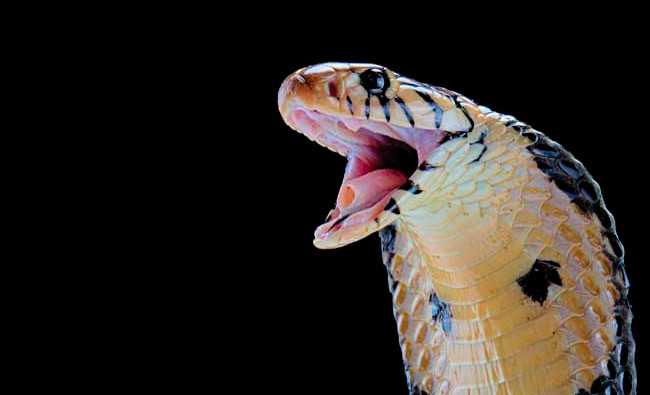The elusive Cenaspis aenigma, or “mysterious dinner snake,” has never been captured alive. In fact, Jake Buehler reports for National Geographic, the slithering serpent has only surrendered itself to scientists once—and even then, in a distinctly roundabout manner.
Unwittingly trapped in the belly of the beast—specifically, the venomous Central American coral snake, Cenaspis first landed on researchers’ radar in 1976, when palm-harvesters working in the Mexican state of Chiapas caught a coral snake that had recently snacked on the smaller species. Due to the partially digested specimen’s irregular stripes, spineless hemipenes and skull shape, Cenaspis defied categorization for decades. But now, 42 years after this initial discovery, biologists from the University of Texas at Arlington have finally shed some light on the enigmatic snake’s origins.
The team’s findings, newly published in the Journal of Herpetology, identify Cenaspis as not only a new species, but an entirely new genus. As Buehler notes, the sole 10-inch male that represents both genus and species boasts an underside decorated with three triangular marks, affording its ventral scales a striped appearance divergent from that of other New World snakes.
Additionally, Cenaspsis’ hemipenes—branched sexual organs that essentially amount to dual penises, according to National Geographic’s Tina Deines—lack the spines commonly seen along the organ, instead featuring cup-like structures known as calyces that Buehler likens to “some kind of otherworldly honeycomb.”
Michelle Starr of Science Alert adds that Cenaspis further differs from known species because of its elongated skull and undivided subcaudal scales, which are plates on the underside of the tail. Combined with the “unremarkable, … uniformly pale brown” coloring described by the researchers, these characteristics offer a strong argument for Cenaspis’ classification as a burrowing snake that spends most of its time underground.
Still, the scientists point out that the reptile’s triangular ventral scale pattern complicates this categorization: “Why a secretive burrowing snake would have such a distinctive ventral pattern is unknown,” the team writes in the study. “The ventral pattern is not replicated in any other Middle American snake.”
Cenaspis’ teeth also suggest the snake is more complex than your average woodland burrower, which typically feasts on soft-bodied prey such as slugs and earthworms. The snake’s mouth and teeth—14 short chompers in the upper jaw—appear to be equipped for wrangling hard-bodied prey, including insects and spiders.
It may seem like the unusual manner of Cenaspis’ discovery outweighs its singular physical characteristics, but actually, the researchers write that “prey items, especially small snakes, are frequently encountered” in coral snakes’ stomachs. As far as the team knows, however, this study marks the first time a new genus has been identified from the remnants of a coral snake’s last meal.
The fact that scientists have yet to identify more than one Cenaspis specimen doesn’t mean the animal has vanished from the face of the Earth. Lead author Jonathan Campbell, a herpetologist at the University of Texas at Arlington, tells Buehler he thinks the mysterious snake still roams Chiapas, perhaps burrowing underground or adopting similar tactics to evade detection.













